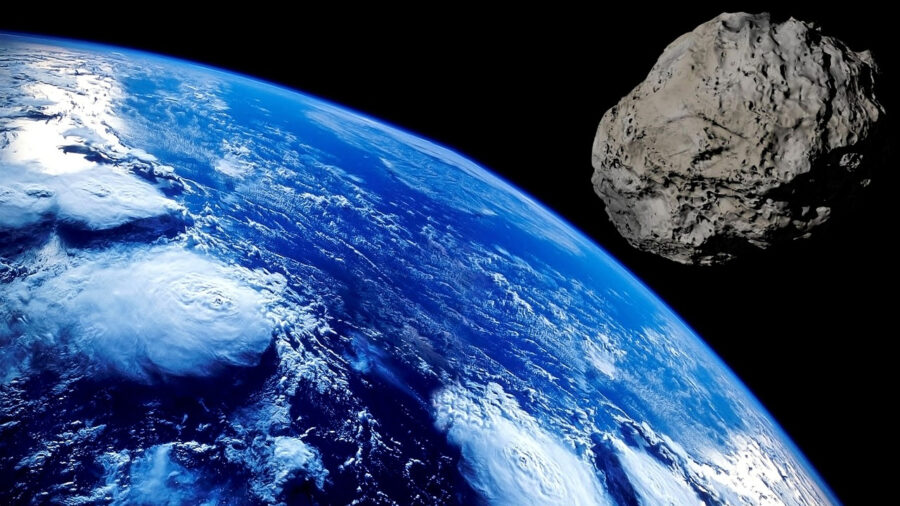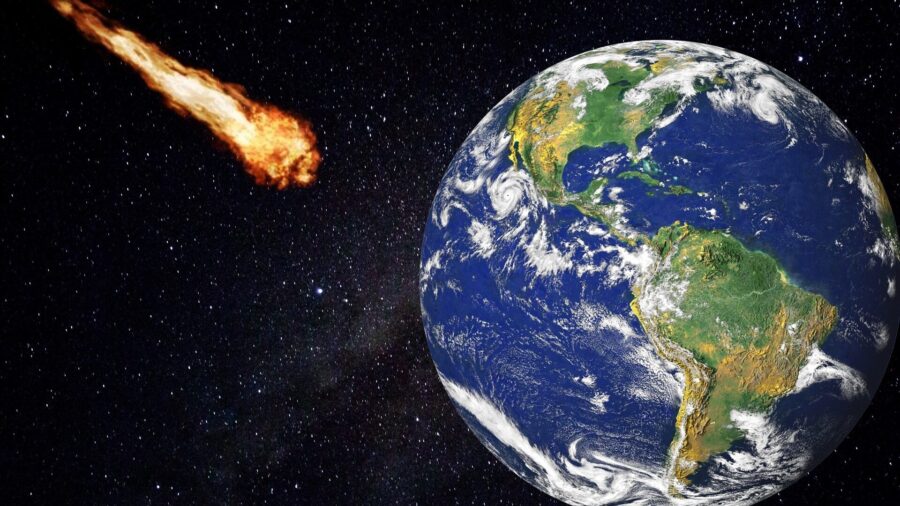Asteroid As Big As A Swimming Pool Discovered And It Has A Good Shot At Hitting Earth
Scientists have discovered that asteroid 2023 DW has a 1 in 600 chance of hitting earth in 2046.

A newly discovered asteroid that’s as big as a swimming pool has been discovered, and while the odds of it hitting earth are relatively low, it’s still more likely than you winning the lottery. According to a social media post that NASA’s Planetary Defense Coordination Office tweeted, the asteroid is called 2023 DW, and scientists believe it might hit earth in 2046.
The asteroid was discovered in February, and scientists have been dutifully tracking its path for the last several weeks. Currently, NASA’s calculations show that the asteroid (which is about 165 feet in diameter, aka the size of an Olympic-sized swimming pool) will reach earth in about 20 years and has about a 1 in 600 chance of colliding with the earth’s surface.
NASA assured its followers on Twitter that while the chances of 2023 DW crashing into our planet is more likely than it typically is for space asteroids, 1 in 600 is still a “very small chance” overall. However, when compared to the 1 in 300,000,000 odds of you winning the PowerBall Jackpot, 1in 600 seems pretty high.
Since February 27, the European Space Agency’s Near-Earth Object Coordination Centre has been tracking asteroid 2023 DW and currently shows the chance of impact as being odds of 1 in 625, and those odds are expected to continually decline over time. Most likely, the asteroid will come close to earth in 2046, but it won’t make a direct impact on our planet.

NASA claims that scientists are still working out the exact trajectory of the asteroid and that it usually takes several weeks of data to accurately predict what an object’s orbit will be several years (or, in this case, decades) into the future.
Even if asteroid 2023 DW did make contact with the earth, it wouldn’t be nearly as devastating as the world’s most famous asteroid impact was—the one that killed the dinosaurs 66 million years ago. That asteroid was 7.5 miles wide, a major difference in comparison to the 165-foot planetoid in question. This means that 2023 DW is only 0.004 percent the size of the dinosaur-killing asteroid.
However, despite the major difference in size, 2023 DW could still be devastating to our planet and the people, animals, and plants that live on it, especially if it were to land near a major metropolitan area. In 2013, a meteor that was less than half the size of this asteroid crashed over Chelyabinsk, Russia, and caused a shock wave that damaged thousands of buildings and injured 1,500 people. Luckily, if the odds of 2023 DW hitting earth are low, the odds of it striking a major city are even lower since 71 percent of the planet’s surface is ocean.
But there is no need to worry about 2023 DW hitting earth because scientists are already working on technology that will make it pretty much impossible for the collision to happen. Recently, NASA’s Double Asteroid Redirection Test (DART) mission confirmed that it was possible to alter the trajectory of an asteroid by slamming space crafts into the orbiting rocks, and scientists are currently working on perfecting this technique.












